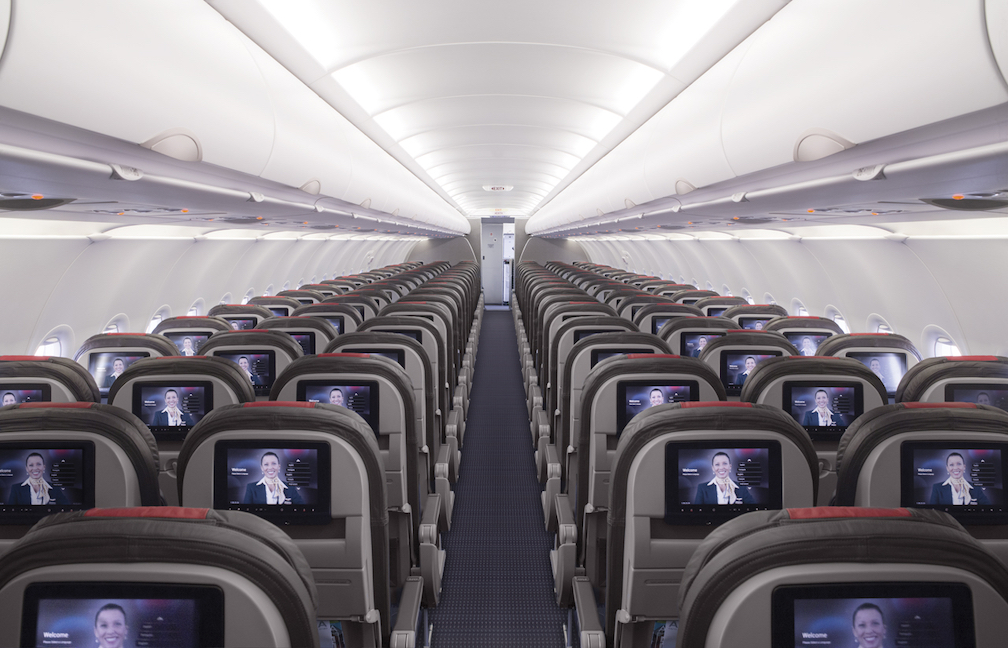Harvard Report: Low Risk Of COVID-19 Transmission On Airplanes
October 27, 2020
Courtesy of American Airlines
Researchers with the Aviation Public Health Initiative (APHI), a project of the Harvard T.H. Chan School of Public Health, today released phase one of its ongoing research on strategies and practices to reduce the public health risks of flying during the COVID- 19 pandemic.
With its focus on considerations aboard the aircraft, the phase one gate-to-gate report found that, through a layered approach to risk mitigation, the scientific evidence shows a low risk of SARS-COV-2 transmission on aircraft. The report provides evidence that it is possible to leverage technology and modify behavior to allow some near-normal activity while reducing the risks of disease transmission during the COVID-19 crisis.
Analysis from the report shows that ventilation of air on the aircraft reduces the possibility of exposure to COVID-19, lower than other common settings, such as a grocery store or indoor restaurant. This effectively counters the proximity travelers are subject to during flights. Because of the frequent exchange of air and HEPA filters on planes, over 99% of the particles containing the virus are removed from cabin air.
In addition to the air filtration systems, synergistic layers include:
- Universal wearing of facemasks by passengers and crew throughout the journey
- Distancing protocols and provision of strong ventilation during boarding and deplaning
- Disinfection of high-touch aircraft surfaces to remove contamination
- Passenger attestations that they do not have COVID-19 related symptoms andcommitment to adhere to airline mask policy
“Our team found that, together with their high-performing ventilation systems, the actions that the airlines put in place – including mandatory use of face masks – significantly reduce risks of viral transmission aboard an airplane,” said Leonard Marcus, Co-Director of APHI. “With comprehensive adherence to these preventive measures by airlines and passengers, air travel, along with other sectors of society, can responsibly return to some level of normal activity as we await development of an effective vaccine.”
The report is a comprehensive assessment of current research on the SARS-CoV-2 virus as it applies to aviation. The APHI team also examined analyses conducted by the industry and government that model disease transmission on aircraft, combining those investigations with their own modeling. The findings report on current practices and opportunities to further reduce risks of disease transmission during air travel.
The researchers recommend that airlines operate supplementary ground-based ventilation systems in accordance with ICAO, and aircraft manufacturers’ guidance to ensure appropriate ventilation is maintained throughout the boarding and deplaning processes. They further recommend that airlines continue to enforce strict behavioral guidelines pertaining to mask wearing, as well as social distancing during boarding and deplaning.
Recommendations for passengers include, first and foremost, wearing masks at all times except for very short periods to eat or drink. Additional recommendations include maintaining social distancing during boarding and deplaning, providing personal health attestations, and maintaining hand hygiene.
Dr. Marcus cautioned that any individual’s decision to engage in any public activity, including flying, must be balanced by personal health considerations.
The second phase of the report will focus on the curb-to-curb airport environment, which will examine testing, the indoor air environment of airports, and other measures to reduce risk of disease transmission.
The study is sponsored by a consortium of aviation industry airline operators, manufacturers, and airport operators. While this is an independent report, to ensure a comprehensive understanding of the science behind COVID-19 mitigation, this project engages a wide scope of key players in the aviation industry, which enables the research to take a systems approach to problem assessment and solution building.
The full report and report highlights can be found here.








